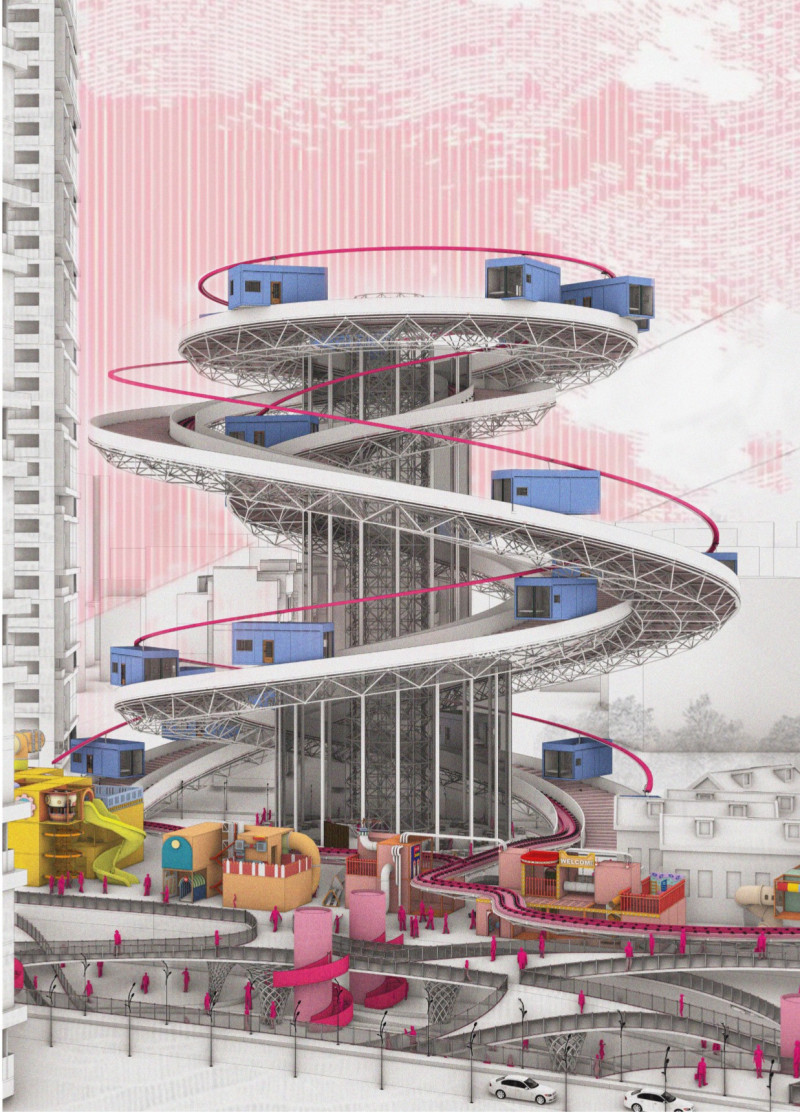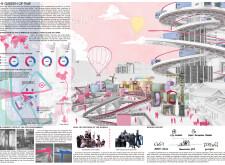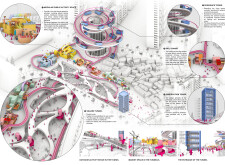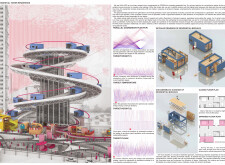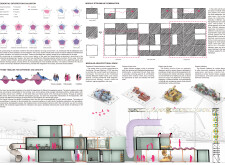5 key facts about this project
### Project Overview
Located in the Liwan District of Guangzhou, Guangdong Province, this architectural initiative aims to respond to the growing needs of an aging population within urban settings. The design is focused on enhancing social engagement for elderly residents, addressing issues such as isolation and lack of stimulating environments. By creating both public and private spaces that encourage interaction across generations, the project seeks to foster community connections through a thoughtful integration of various functions and activities.
### Spatial Configuration
The layout of the project incorporates modular public activity spaces, including elderly activity centers, traditional Chinese medicine facilities, and children’s playgrounds. These elements are designed to facilitate intergenerational exchanges and promote active engagement among users. A spiral transit system enhances mobility within the space, linking different levels while serving as a visually appealing architectural feature. Additionally, observation and community towers offer panoramic views and venue options for public events, thus strengthening the bond among residents.
### Material Selection and Sustainability
The project employs a diverse range of materials, including steel and glass for structural components, promoting both durability and light access. Brightly colored exteriors create an engaging visual landscape, contributing to a welcoming atmosphere. Sustainable and eco-friendly materials are incorporated to align with environmental considerations essential in contemporary urban design. These design choices not only enhance the aesthetic value but also prioritize sustainable practices, underscoring the commitment to a socially conscious architectural framework.


